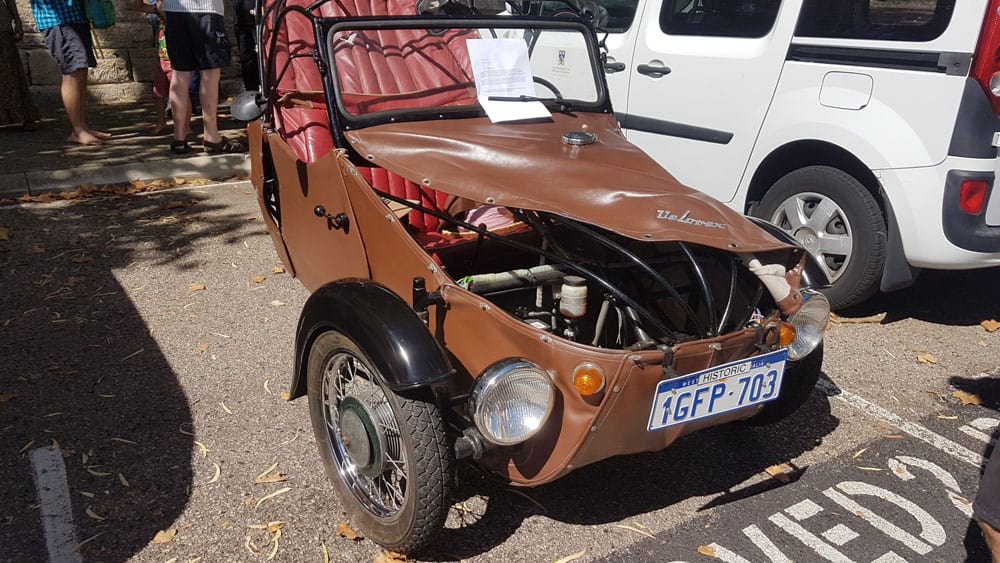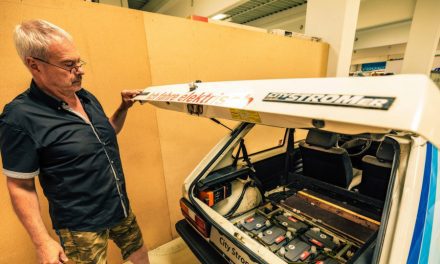The most recent one, in Perth, had three rare Czech cars among the 350 or so other collector cars on display.
There was a pristine Tatra Tatraplan of around 1960, a less than pristine Skoda Octavia Super, complete with period CS international plate, dating to circa 1962, and a Velorex.
A Velo what?
What initially appeared to be a home-made creation turned out to be one of the most popular vehicles in post-war Czechoslovakia, now known as the Czech Republic.
The two-seater open-top three-wheeler had its outer skin (it’s of leather-like vinyl) partially lifted to show its metal-tubed framework.
The car was the product of the two Stransky brothers, who had a bicycle repair shop in a Czech village, and built their first batch of cars in 1945.
They were called Oskars.
There was an immediate demand for the strange machines and the Stranskys built them at the rate of about 40 a month before joining a small manufacturing company called Velo in 1950, to increase production.
Then in 1954, one of the brothers died while testing a prototype, and a couple of years later the other brother was fired for declining to join the Communist Party.
The three-wheeler’s name was then changed to Velorex and production was lifted to 120 vehicles per month.
Early cars had 175 or 250cc engines and in 1963 a more powerful Jawa 350cc two-stroke, as fitted to the car in Perth, appeared.
In 1971, production of three-wheeled cars stopped, and the company switched to a four-wheeler, also with the Jawa 350 engine, but it was a commercial dud and production stopped in 1973.
All up, some 2500 Oskars and Velorex 16/250s were built, the ones with 175cc motors numbered 800 and 12,000 of the ones with the 350cc engines were produced.
The ill-fated four-wheelers were dropped after only 1380 of them found buyers.

About half of the production was exported to Eastern Bloc countries of Hungary, Poland, Bulgaria, and East Germany – 7540 vehicles in total.
In their home market demand exceeded the supply and the authorities deemed that new cars could be sold only to disabled folk.
However, while super-rare in Australia and other parts of the Western world, more than 60per cent of Velorexes sold in Czechoslovakia are still registered.
The three-wheeled oddball has reached cult status and there are several Velorex clubs in the Czech Republic which regularly organize rallies and outings.
Until 2000 you only needed a motorcycle license to pilot a Velorex, but the law then decided it really more car than a bike.
The machine has a frame of welded steel tubing, with the vinyl bodywork stretched over the cage and attached by Dzus fasteners.
The current owner imported the car from Frankfurt, had to have the ‘completely wrong’ electrics attended to and says his Velorex, the handling of which he described as ‘frankly dangerous’ was a work in progress.
However, it is ‘great fun to drive with a top speed of an alarming 110km/h.’
Velorex is still in business, these days making motorcycle sidecars.







